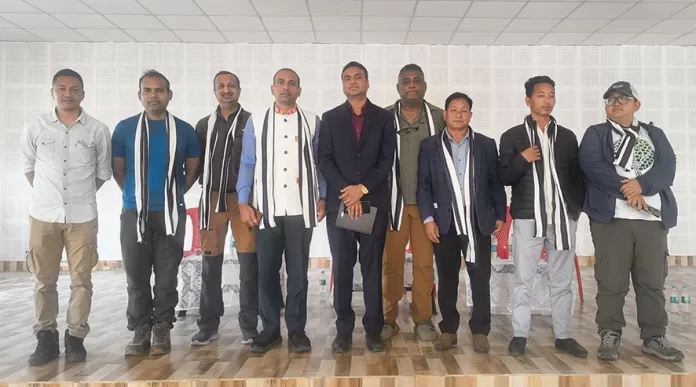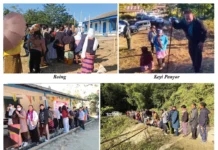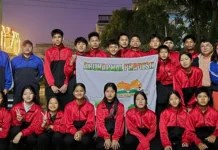[Tenjing Koyu]
SEIJOSA, 19 Jan: The Pakke Paga Hornbill Festival (PPHF), a hallmark of conservation efforts in Arunachal Pradesh, hosted a panel discussion on human-wildlife conflict management and solutions, bringing together experts, officials, and local stakeholders. The discussion, attended by prominent dignitaries, addressed the challenges of balancing wildlife conservation with the needs of local communities.
Damodar AT, conservator of forest and wildlife, lauded the festival as a model for nature-based conservation, and expressed concern over the growing overlap between human and wildlife habitats. He highlighted how increasing population and technological advancements in hunting have disrupted traditional, sustainable resource use. He also explained that wildlife often raids human crops in search of easy food, leading to retaliatory actions by locals.
Tajum Yomcha, research officer at the principal chief conservator of forest office, brought attention to the plight of the mithun, revealing unethical practices in certain villages where mithun meat is used to bait and kill wild dogs, incentivised by prizes for hunters.
Jacob Tana, president of the All Pakke-Kessang District Students’ Union, highlighted the issues faced by the local people due to wild animal intervention, and sought solutions during his opening remark of the panel discussion.
Loli Kino, chairman of the Nyishi Elite Society, Seijosa block, emphasised on the importance of coexistence of humans and the wild animals. He stressed on proper dissemination of ex gratia to the affected people, and sought proper policies and agendas that need to be implemented by the government.
Nature educators Apurba Chakraborty, Amitava Majumder, and Peeyush Sekhsaria emphasised the need for a holistic approach to address conflicts, stating that humans are increasingly encroaching on wildlife habitats, rather than the other way round. One educator remarked on the absence of such conflicts in urban areas like Kolkata due to the lack of wildlife, calling it a “sad reality.” The educators also commended Arunachal for maintaining its rich biodiversity and clean environment.
During the discussion and as a part of the question-answer round, locals who were present there as audience voiced their concerns over recurring crop destruction by wildlife, including elephants and other wild animals, which damage crops such as betel nuts, and rubber and fruit plantations.
Farmers present criticised the current compensation of Rs 10,000-Rs 20,000 for crop losses as inadequate, given the months of hard work invested in cultivation. They demanded basic measures such as non-lethal electrified fencing along elephant corridors and forest boundaries to safeguard their farms. Residents also expressed frustration that despite having allocated large tracts of land to forest departments, their demands for such essential protections remain unmet.
Pakke Forest Reserve DFO Satyaprakash Singhacknowledged the challenges faced by the locals and thanked them for their commitment to wildlife conservation despite personal losses. He assured them that the forest department would prioritise human-animal conflict management issue after the festival. However, he explained that procedural requirements and funding approvals often cause delays, and emphasised the importance of collaborative planning for long-term solutions.
The discussion concluded on a positive note with a consensus to integrate efforts across various departments, including forest, horticulture, and research, to design effective solutions.
Suggestions included studying animal behaviour to create strategic crop protection measures, such as planting unpalatable crops on farm perimeters, and developing wildlife corridors to minimise conflict. Both locals and officials pledged to work together to address these issues, reinforcing Arunachal’s commitment to sustainable development and biodiversity conservation.
The panel discussion underscored the importance of balancing development with conservation, and highlighted the Pakke Paga Hornbill Festival as a beacon of collaborative efforts in safeguarding Arunachal’s natural heritage.




